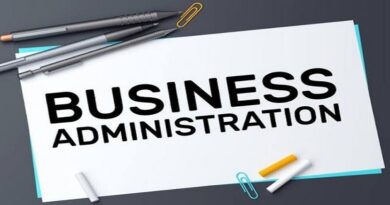5 Common Features of Successful Hybrid Work Models
Human resource managers are fastening their seat belts as they grapple with the return-to-work benefits that will motivate their employees to perform their tasks. Leadership has recognized the need to embrace a hybrid workplace model to accommodate the work-life balance aspect for their employees and retain their best talent that was hired, nurtured, and rewarded under the brand’s canopy.

The hybrid work model is a differentiator
Field surveys conducted recently to point a preference towards hybrid work over completely remote or in-person models. With a hybrid work model, employees are finally able to balance their work and personal lives.
When employees can attend meetings and increase their productivity. Without having to strain from long commutes on busy traffic congested roads, they can work better.
Attending to young children and pets without feeling guilty about neglecting family or work commitments is a big differentiator. Many companies are attracting new talent with the lure of hybrid work and opportunities to work from remote locations as a perk.
In a complete remote model, employees tend to feel burned out when they don’t get to interact or bond with colleagues physically. The psychological impact of total remote working is eliminated in the hybrid model. This is going to be a game changer for talent acquisition and retention in the future.
Build a successful hybrid workplace
Employee experience
A workplace needs to ensure the well-being of employees, offering them an experience they appreciate. Employee satisfaction is dependent on many factors like the learning curve, challenging tasks that enrich professional skills, personality development attributes, the right digital systems to perform well, inclusive meetings, fair appreciation with rewards, and a competitive salary and benefits package are few elements that help in developing a good experience for an employee.
Many other aspects influence employee experience. Any business must help establish a good employee experience platform that can engage and empower them to achieve organizational goals.
Decentralize as per size
Depending on the size of the organization and the number of functions. It is a good idea to create micro-hubs with decentralized leadership for the effective management of teams spread across geographical locations and time zones.
With an even spread of decision-making centres, the accountability of managers is ensured. That productivity is optimized and the ability to access talent improves. While reducing the cost overheads through hybrid models.
Work on the work culture
Cultivating a nurturing work culture is paramount in today’s dynamic workplace environment. A positive organizational culture encompasses a welcoming atmosphere where mutual respect is the norm and open dialogue with management is encouraged rather than being a formidable challenge. It’s a culture where communication channels are transparent, facilitating easy exchange of ideas and feedback.
Furthermore, employees must receive adequate training to adapt to ongoing changes, ensuring they are well-equipped to meet evolving demands. Empowerment is also a key element, enabling individuals to excel and build strong, collaborative relationships with colleagues. As remote work becomes more prevalent, companies must innovate to reinforce these cultural pillars, ensuring that employees feel valued, heard, and motivated to contribute their best, regardless of physical distance.
Culture is important for anyone who wants to work in an organization. When we talk about culture, it is inclusive of :
- The environment and the way people treat each other
- If discussion with line-up managers is a herculean task or the function leads are open to suggestions and feedback from the team members
- How open the communication channels are
- Adequate training to comply with change management
- Empowerment to excel at their work and foster great relationships with co-workers
Establishing the above framework is in tall order and with virtual medium added as a clause. It is a challenge that has to be worked around by the companies to help employees feel secure, communicate to opine and perform their work with dedication.
Improve the technology
With more employees working from remote locations, matching the technology and updating the digital tools is crucial for the smooth passage of business to transition to a routine, no-episode day.
Even if there are bottlenecks, they should be manageable and the workforce should be trained to meet the challenges most appropriately.
The entire workforce should be able to work in their new locations as they did in a traditional model.
Everyone should find communicating, collaborating, and ideating during meetings smooth and efficient. Technology is meant to ease the process and if the user is not known to team members then it is not purposeful. Steps have to be taken to train on any system that is new or not fully understood by employees.
All individuals are not self-starters and expecting everyone to know complicated workflow is not a desirable method. It will create confusion and delay the process flow. As a result, the output and customer experience will be impacted negatively. Instead training the workforce will align their qualifications and sharpen their skills, to aid them to do well in their designated roles.
Distinguish between work modes
Often some tasks can be delegated and just with a few instructions, the work will be completed asynchronously. There are other tasks where the function lead and team members have to work more closely with each other.
This kind of work is synchronous. Depending on the priority and how crucial a given task is, offices can let critical functions and tasks be completed synchronously. Also, on the days when the employees are working from their office desks.
Other functions that are lighter in terms of intensity and importance can be moved to days when members can work from remote locations.
Certain employees perform very well only when they work on their own. If it is possible to give complete remote roles to them and have other members. Who are comfortable with complete in-person roles. Then it features a type of hybrid where the employee’s will is exercised.
Free will of employees to choose the days when they want to work from home. When they would like to check in to a physical office is also a popular step.
The method of work mode is entirely dependent on workforce insights and business requirements. It can take a few trials and errors before finding the perfect blend of the hybrid mode of working.
Conclusion:
Hybrid workplace models are successful when the organization does not lose sight of its values and goals. If they stick to being an exceptional company with a great work culture that regards their employees’ well-being with paramount importance. Then they are likely to build a good hybrid workplace model. The change in the model should not change the core values of a company. It still needs to strive to be a great place to work.





Pingback: What Is Hybrid Work Software? Unlocking Flexible Work Environments - Future Business Boost
Pingback: A Guide to Digital Business Card Deployment in Large Organizations - Future Business Boost
Pingback: The Role and Benefits of a Digital Immune System for Your Business - Future Business Boost